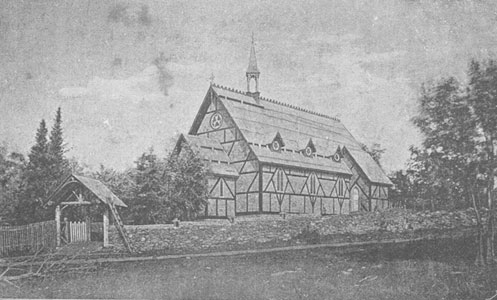 |
SOCIETY FOR PROMOTING CHRISTIAN KNOWLEDGE |
 |
SOCIETY FOR PROMOTING CHRISTIAN KNOWLEDGE |
Chapter I. How It Came About That I Went to Canada.
Chapter II. First Missionary Experiences.
Chapter III. Our Arrival at Sarnia.
Chapter IV. Kettle Point.
Chapter V. Indian Names Given.
Chapter VI. Christmas on the Reserve.
Chapter VII. Mission Work at Sarnia.
Chapter VIII. The Bishop's Visit.
Chapter IX. First Visit to Garden River.
Chapter X. Baptism of Pagan Indians.
Chapter XI. The Red River Expedition.
Chapter XII. Changes in Prospect.
Chapter XIII. Roughing It.
Chapter XIV. Chief Little Pine.
Chapter XV. Our First Winter in Algoma.
Chapter XVI. Chief Buhkwujjenene's Mission.
Chapter XVII. An Indian Chief in England.
Chapter XVIII. A Trial of Faith.
Chapter XIX. Learning to Know My People.
Chapter XX. A Wedding and a Death.
Chapter XXI. The Opening of the First Shingwauk Home.
Chapter XXII. Fire! Fire!
Chapter XXIII. After the Fire.
Chapter XXIV. Prospects of Re-building.
Chapter XXV. Laying the Foundation Stone.
Chapter XXVI. A Trip to Batchenwauning.
Chapter XXVII. The Winter of 1874-5.
Chapter XXVIII. The New Shingwauk Home.
Chapter XXIX. Runaway Boys.
Chapter XXX. Charlie and Ben.
Chapter XXXI. A Trip up Lake Superior.
Chapter XXXII. Coasting and Camping.
Chapter XXXIII. Up the Neepigon River.
Chapter XXXIV. Thirty Years Waiting For A Missionary.
Chapter XXXV. The Pagan Boy--Ningwinnena.
Chapter XXXVI. Baptized--Buried.
Chapter XXXVII. The Wawanosh Home.
Chapter XXXVIII. A Sad Winter.
Chapter XXXIX. William Sahgucheway.
Chapter XL. Our Indian Homes.
Chapter XLI. A Pow-Wow At Garden River.
Chapter XLII. Glad Tidings from Neepigon.
PREFACE A few words addressed by the Bishop of Algoma to the Provincial Synod may form a suitable preface to this little book, which aspires to no literary pretensions, but is just a simple and unvarnished narrative of Missionary experience among the Red Indians of Lake Superior, in the Algoma Diocese.
"The invaluable Institutions at Sault Ste. Marie still continue their blessed work of educating and Christianizing the rising generation of Ojebways. Founded in a spirit of faith, hope, and charity,--carrying out a sound system of education, and in the past 'approved of God' by many signs and tokens, the friends of these two 'Homes' may still rally round them with unshaken confidence. Their history, like that of the Christian Church itself, has been marked by not a few fluctuations, but their record has been one of permanent and undoubted usefulness.
"Only a person deeply interested and directly engaged in the work, as the Rev. E. F. Wilson is, can understand the force of the difficulties to be encountered from the ineradicable scepticism of Indian parents as to the disinterestedness of our intentions with regard to their children; the tendency of the children to rebel against the necessary restraints imposed on their liberty; the reluctance of parents to leave their children in the 'Home' for a period sufficiently long for the formation of permanent habits of industry, and fixed principles of right; the constitutional unhealthiness of Indian children, terminating, as it has here in a few cases, in death; the all but impossibility of obtaining helpers for subordinate positions, such as teacher or servant, who regard the question of the evangelization of the Indian from any higher stand-point than the financial.
"Against this formidable array of obstacles Mr. Wilson has not only struggled, but struggled successfully, till now these two Institutions, over which he has watched with all the jealous vigilance of a mother watching her first-born child, stand on a basis of acknowledged success, as two centres for the diffusion of Gospel light and blessing among the children of a people who have been long 'sitting in darkness, and the shadow of death.' During the past year sundry improvements have been made in the Shingwauk Home, which will largely increase the comfort of the occupants. The most notable event, however, to be recorded in this connection is the completion and consecration of the 'Bishop Fauquier Memorial Chapel,' a beautiful and truly ecclesiastical structure, designed, in even its minutest details, by Mr. Wilson, and erected by means of funds sent mainly from England, in response to his earnest appeals for some enduring and useful memorial of the life and labours of the late revered Bishop of this diocese. Long may it stand, as a hallowed centre for the diffusion of Gospel light among hundreds yet unborn, of the Indian tribes he loved so well."
Project Canterbury